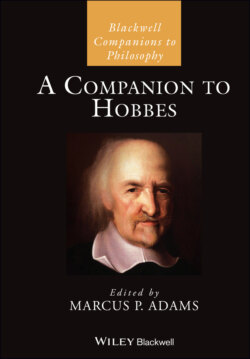Читать книгу A Companion to Hobbes - Группа авторов - Страница 11
1 The Presentation of Hobbes’s Major Writings
ОглавлениеBroadly speaking, Hobbes’s major works follow roughly the same manner of presentation, from his early work Elements of Law (1640)9 through the two editions of Leviathan (1651 and 1668) and to the works in the trilogy Elements of Philosophy that were published between 1642 and 1658. There are many differences among these works, as some of the chapters in the present volume expose, but an overarching division in common in these writings is between what Hobbes calls natural bodies (“Bodies Naturall”) and political bodies (“Politique Bodies”) in the well-known Table provided in the English edition of Leviathan chapter 9 (2012, 130; the Table is between 1651, 40–1).10
The Table of Leviathan chapter 9 traces the consequences from the accidents of natural bodies and political bodies. Following Hobbes’s display of the consequences following from the accidents of natural bodies, at the right-hand side of the Table the reader finds the disciplines that study them, such as first philosophy (philosophia prima), geometry, architecture, astrology, optics, ethics, and “The Science of just and uniust” (2012, 131). The terminating points of the consequences from accidents of political bodies are just the following:
1 Of Consequences from the Institution of common-wealths, to the Rights, and the Duties of the Body Politique, or Soveraign.
2 Of Consequences from the same, to the Duty, and Right of the Subjects. (2012, 130)
At first glance, this Table might appear like a schematic overview of the structure of Hobbes’s philosophy, i.e., it may look like Hobbes is showing the reader how the different parts of his philosophy relate to one another in terms of dependence relationships. However, there are difficulties with understanding the Table in this way. For example, since disciplines such as optics and geometry are both at the furthest right-hand side of the Table, the Table provides the reader without any explanation for why it is legitimate to use geometry in optics, as Hobbes does, for example, in De homine 2. Using geometry within optics, or in other investigations such as astronomy, music, or geography, would require one to cross from one terminating point of the Table into another, but the reason why such a move would be legitimate, as Hobbes’s practice implies, is not at all evident from the Table.
Similar difficulties arise in taking the Table to show the structural dependence relationships of civil philosophy to other parts of philosophy. Indeed, the “Science of just and uniust” follows from “physiques” and not civil philosophy on the Table, showing that the line between natural bodies and political bodies may not be as precise as the Table seems to indicate. Given these difficulties in thinking of the Table as indicative of the structure of Hobbes’s philosophy, I suggest the Table is only an outline of subjects to be treated. In other words, the right-most side of the Table shows the order of subjects to be presented and not the dependence relationships among the parts of philosophy.11
Even if Hobbes did not intend the Table to display how the parts of his philosophy fit together with one another, the Table does cohere with the overall manner of presentation in his major works. The two parts of Elements of Law (1640) fit this general structure, being divided into “Humane Nature” and “De Corpore Politico,” and the Leviathan’s first two parts, Part I (“Of Man”) and Part II (“Of Common-wealth”), likewise mirror that same general structure. However, in the Elements of Philosophy trilogy, Hobbes covers much more ground than he does in Elements of Law or Leviathan. As a result, we can view the right-hand-side terminating points of the Table in Leviathan 9 as a guide to many of the additional subjects that one finds in Elements of Philosophy, and they appear in roughly the same order as they are presented on the Table. In Figure I.1, the parenthetical additions show where the right-hand-side terminating points of the Table from Leviathan 9 correspond to parts within the three sections of Elements of Philosophy, i.e., De corpore, De homine, and De cive.
Figure I.1 The order of presentation in Hobbes’s Philosophy: The Table of Leviathan 9 compared to the Elements of Philosophy trilogy.
This alignment of the right-hand side of the Table of Leviathan 9 with parts of the three sections of Elements of Philosophy leaves out some of the disciplines mentioned in the Table, such as “Science of ENGINEERS” and “ARCHITECTURE” (2012, 131), but the present aim has been to show the broad overlap in the manner of presentation among Hobbes’s major works. The next section discusses the organization of this Companion.
